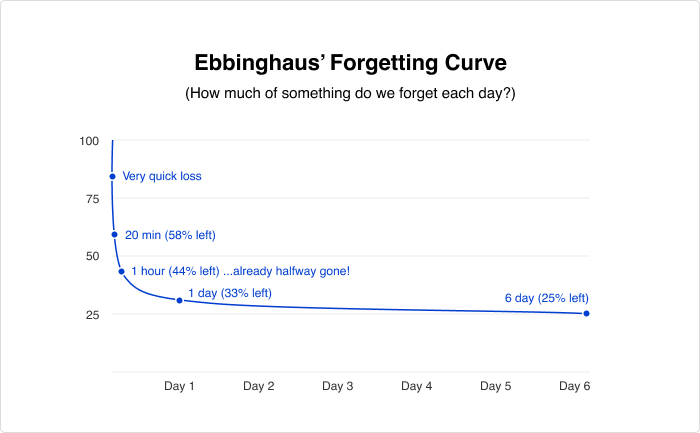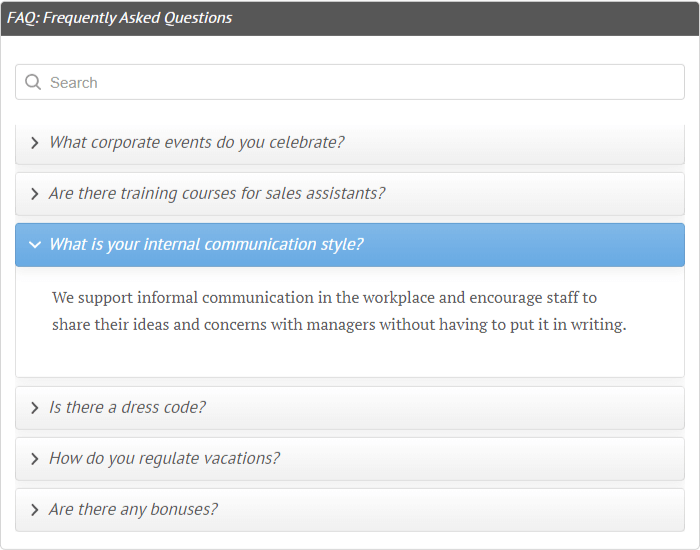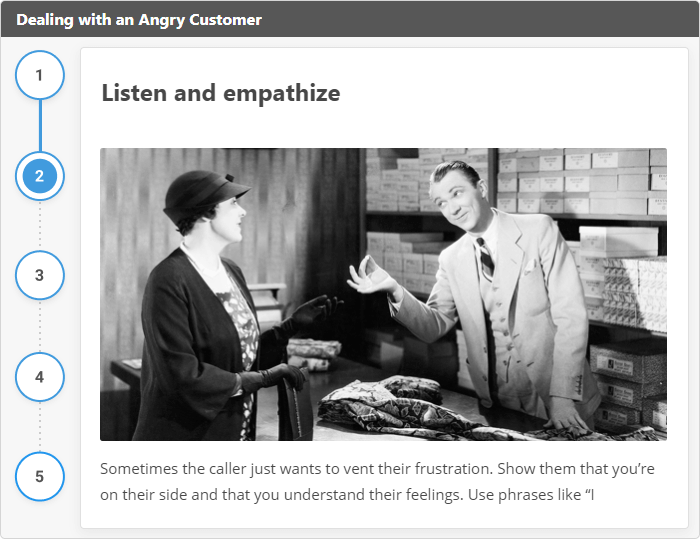7 Benefits of Microlearning You Need to Know

Do you want your eLearning content to have greater impact? Start by thinking smaller! Over the past decade, learning and development leaders have increasingly relied on microlearning to deliver the knowledge and skills their teams need to get the job done.
What Is Microlearning?
As the name implies, microlearning is real learning delivered in bite-sized chunks, so it can be completed in just a few minutes. Microlearning modules offer a great way to deliver a focused answer to a single problem or question. Any type of online content, including video tutorials, audio podcasts, presentations, scenarios, and assessments can be created as microlearning.
Microlearning is typically mobile-ready, making it accessible on any type of device. Learners love microlearning because it offers immediate access to essential skills and knowledge. Instructional designers adore it because it allows them to develop high-quality training quickly and inexpensively.
Organizations that don’t make use of microlearning are missing out on the chance to build the kind of fast-paced, engaging content that your learners want. Still not sure if this is for you? In this article, we’ll explore seven microlearning benefits that show you how smaller learning bursts can drive large results.
1. Improved Learning Retention
Learning is a process that requires us to absorb and reflect in order to build new knowledge and skills. The German psychologist Hermann Ebbinghaus found that the average learner forgets 50% of what they learned in a class within one day and about 90% of what they learned within a month. He called this finding the Forgetting Curve.
Here’s what the Forgetting Curve looks like for a single learning event.

Ebbinghaus found that information is more likely to be retained when learning is conducted as a series of repeated activities, rather than a one-and-done event. Repetition creates stronger memories and stimulates recall.
Microlearning is an ideal antidote to the Forgetting Curve because it allows you to quickly create focused and memorable training activities and assessments that reinforce knowledge. Research has shown that microlearning reduces the potential for mental fatigue by focusing the brain to learn one thing quickly and then take a break. A repeated pattern of spaced learning activities helps transfer new information into short- and long-term memory, which is how we grow knowledge.
Many companies already use microlearning for workplace training and achieve great results. For example, after implementing a microlearning program, Walmart managed to improve employee knowledge and retention regarding safety practices dramatically and achieve a 54% decrease in recordable safety incidents.
2. Better Learner Satisfaction
A recent survey found that Millennials (those born between 1980-2000), together with their younger Gen Z counterparts, now comprise close to one half of the total US workforce. Our youngest professional colleagues embrace technology in every way possible, both on the job and in the training arena.
Modern learners want training materials that are effective, accessible, and fast. Microlearning is typically mobile-first, making it the ideal solution for the 70% of employees who look for just-in-time answers to work-related problems.
For instance, after launching a unified microlearning-based training for sales professionals, BH Media, which owns and operates 119 newspapers in the US, received positive feedback from their employees that demonstrated near-unanimous satisfaction. 98% of participants agreed or strongly agreed that the content was useful and immediately applicable in their daily work.
3. Faster Learning
A recent study by LinkedIn found that the biggest barrier to workplace learning is time. Research conducted by Josh Bersin for Deloitte showed that employees typically spend just 1% of their workweek (or 24 minutes) on learning activities. With the average length of a corporate eLearning module running between 15 and 30 minutes long, most of us would be lucky to complete one course a week.
Microlearning modules are considerably shorter than traditional eLearning courses, making it possible for learners to complete multiple courses each week.
4. Raised Engagement
Do your learners typically find your learning programs to be engaging? If not, one reason may be that you’re giving your learners too much information to absorb in one sitting. A majority (58%) of respondents to an LMS engagement survey said they would use learning tools more often if the content was broken up into multiple, shorter lessons.
A large part of microlearning’s appeal is that it aligns well with how our brains absorb information. Well-written microlearning includes only need-to-know information and skills, so learners don’t waste time on non-essential information or activities. A study by the Association for Talent Development (ATD) found that microlearning engaged learners more than traditional eLearning by creating experiences that were more memorable and more likely to “stick” in the learners’ minds.
The experience of Magellan Health, an American for-profit managed healthcare company, shows this to be the case. The company’s talent department was feeling more than frustrated that only 80 out of 6,900 employees accessed the corporate learning platform over the course of an entire year. After adopting a microlearning approach, training participation increased by 80%, with an average of 2,000 microlearning lessons viewed each month and 700 employees trained in less than half a year.
5. Reduced Development Time and Costs
Time is money. Microlearning has proven its ability to save time and money on many levels:
- Learners save time by completing courses faster, as mentioned above.
- Organizations save time because they can create and update microlearning courses faster than with traditional eLearning.
- Organizations also save money because they don’t have to pay for classroom space, instructors, or travel.
Learning expert Ray Jimenez, PhD, estimates that microlearning allows organizations to develop eLearning up to 300% faster, while cutting development costs in half.
6. Learning Culture Support
A learning culture is a set of organizational values and practices that encourage the ongoing development of job-related knowledge and skills. Organizations with a strong learning culture encourage their personnel to continually grow their skills and share their expertise.
Regular engagement with learning content is a sign of a strong learning culture. Microlearning is designed to be accessible on demand and easy to share, so it’s an ideal way to promote a culture of learning.
7. Boosted Learner Efficiency
If you want your organization to be as lean, mean, and productive as possible, you need microlearning. The short structure of microcourses means that learners can quickly learn and get back into the workflow, ready to apply their knowledge to the task at hand. Microlearning focuses on one topic at a time, so your learners gain specific knowledge in the most efficient way possible.
In a study conducted by APA PsycNet Articles, learners who received “successive small bites” of information about a process outperformed colleagues who were taught the same process in a longer format. Participants who received microlearning were more likely to be able to explain the process and generate solutions to problems than their peers.
The InterContinental Hotels Group’s experience is a great example of how microlearning improves employee efficiency. Faced with a constantly increasing number and complexity of customer requests among its 5,000+ hotels all over the world, IHG needed a new kind of training that could help streamline the process. After the company introduced microlearning and made microcourses accessible to their employees on any device at any time, it managed to cut onboarding time from 5 weeks to 2 weeks, getting employees back on the phones faster and resolving issues better.
Now that you know the biggest advantages of microlearning, let’s look at what truly engaging microlearning experiences you can create for your learners.
Microlearning in Action
Here are some examples of microlearning we can create in a matter of minutes.
Induction program
During their first days on the job, employees usually have a lot of questions about their new company. Create a microlearning FAQ activity to answer the most common questions your new hires have. The FAQ interaction is easy to use and can be quickly updated at any time.
Process or procedure steps
Microlearning is a great way to demonstrate a standard process that employees need to follow on a regular basis. Creating this process in a demonstration format ensures that every learner gets the same information, in the same way.
Visual product presentation
Sales teams have to be able to present and explain the features and benefits of the products and technology they’re selling. A visual product presentation allows you to identify the components of any type of merchandise and explain the capabilities of the component in detail.
All the microlearning examples mentioned above were created with the help of the iSpring Suite authoring toolkit. But, in fact, it also allows you to create full-fledged eLearning courses with quizzes, screencasts, and dialog simulations.
The following is one more microlearning type that completely differs from what you’ve already seen.
Onboarding course
This microcourse is designed to help new hires feel comfortable and excited about their new role. It looks like an interactive article and is created with the online authoring tool, iSpring Page. The process of its development is extremely simple: you build courses the same way you write a post on social media. iSpring preserves images, videos, paragraphs, and list styles intact, so your content displays beautifully on the learner’s screen. With this tool, you can create a series of onboarding microcourses, each on its “micro” topic: where to have lunch, the logistics related to parking, and what to do if you are sick.
Final Thoughts
Microlearning is not just an eLearning trend. It’s a smart learning strategy that appeals to your learners and allows you to create effective and engaging content quickly and easily. Microlearning can also serve as a building block for establishing a culture of learning in your organization.
Do you use microlearning in your company? Please share your experience and views on microlearning in the comment section below!







